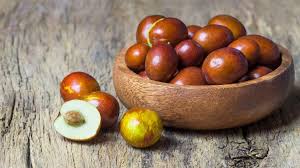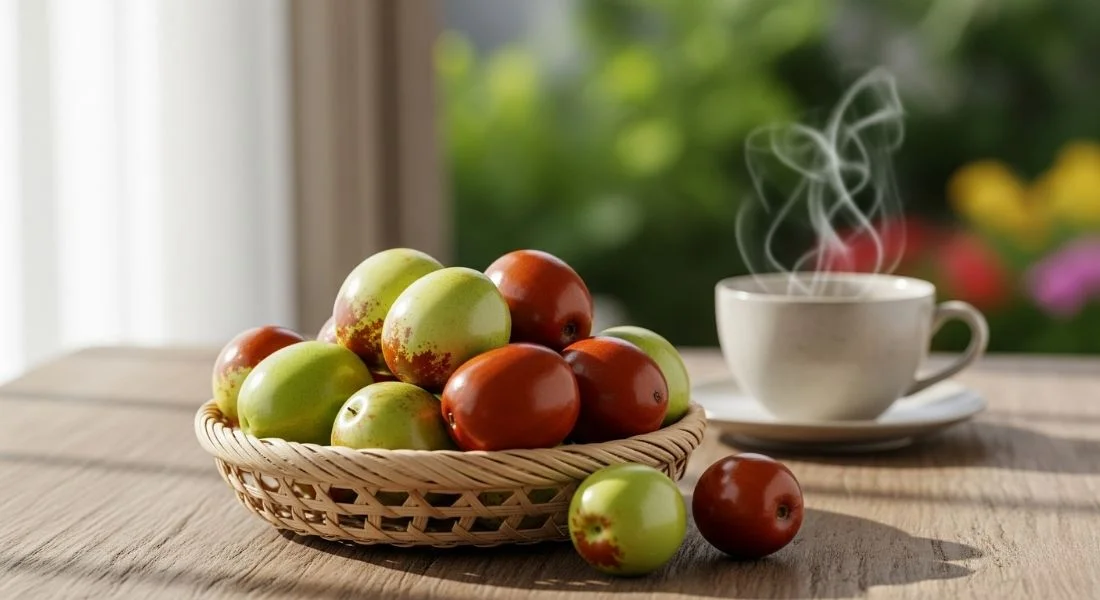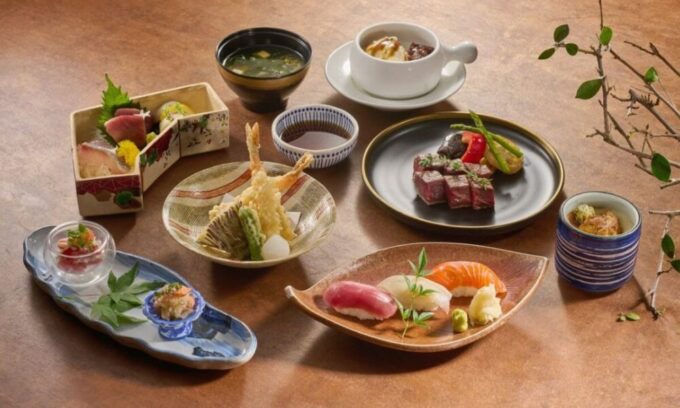Have you ever walked past a unique-looking fruit at a farmer’s market and wondered what it was? You may have just discovered the incredible žižole. Often called the Chinese date or jujube, this small but mighty fruit has been cherished for centuries in various cultures for its sweet taste and versatile uses. Whether you see it fresh, dried, or as a powder, the žižole offers a delightful experience. This guide will uncover everything you need to know, from its rich history and nutritional profile to how you can enjoy it in your own kitchen. Get ready to explore why this ancient fruit is making a big impression on modern wellness and culinary scenes.
What Exactly is a Žižole?
A žižole is a small, reddish-brown fruit that grows on the Ziziphus jujuba tree. When fresh, it has the crisp texture and sweetness of a small apple, with a thin, edible skin. As it matures, its skin wrinkles and its flavor deepens, becoming chewier and tasting remarkably like a date—hence its nickname, the Chinese date. This versatility is one of its most appealing traits. You can find žižole in several forms: fresh for snacking, dried for a chewy treat, brewed into a soothing tea, or ground into a powder for smoothies and baking.
Each form offers a different texture and concentration of flavor, making it a fantastic ingredient to experiment with. The fruit contains a single hard pit in the center, which should be removed before eating. Its unique flavor profile, somewhere between an apple and a date, makes the žižole a memorable and delicious fruit.
The Origin and Cultivation of Žižole
The story of the žižole begins over 4,000 years ago in its native South Asia. From there, its cultivation spread across the globe, becoming a staple in China, Korea, India, and the Middle East. It’s a remarkably resilient plant, capable of thriving in a wide range of climates, from arid deserts to more temperate zones. This adaptability has allowed it to be introduced to new regions, including parts of Europe and the United States.
In the U.S., the žižole tree can be grown in USDA hardiness zones 6 through 11, which covers a significant portion of the country, from the warmer parts of the South to areas in the Southwest and West Coast. Gardeners appreciate it not only for its fruit but also for its attractive, glossy leaves and low-maintenance nature. It’s drought-tolerant once established, making it a sustainable choice for home gardens in drier climates.
Understanding Its Cultural Significance
Beyond its use as a food source, the žižole holds deep cultural significance in many parts of the world. In Korean culture, for instance, dried jujubes are an essential ingredient in traditional dishes and teas, such as samgyetang (ginseng chicken soup) and daechu-cha (jujube tea). In China, the red color of the fruit symbolizes prosperity and good fortune, making it a common feature during celebrations like the Lunar New Year.
The fruit is often given as a gift or included in wedding ceremonies to wish the couple a sweet life together. Its name varies globally; while we focus on žižole, it is known as jujube in English, daechu in Korean, hóng zǎo in Mandarin, and ber in Hindi. This global presence underscores its long-standing role in culinary traditions and folk medicine across diverse societies.
Nutritional Profile: More Than Just a Sweet Treat
The žižole isn’t just delicious; it’s also packed with nutrients that can support overall wellness. It is particularly well-known for its high vitamin C content, an essential antioxidant that supports the immune system and skin health. Additionally, these small fruits are a good source of dietary fiber, which is crucial for maintaining a healthy digestive system. They also contain various minerals, including potassium and iron, along with a range of beneficial plant compounds like flavonoids and saponins. These antioxidants help protect the body’s cells from damage caused by free radicals. Incorporating žižole into your diet is a tasty way to boost your intake of these important nutrients.
Disclaimer: This article is for informational purposes only. The information provided is not intended to be a substitute for professional medical advice, diagnosis, or treatment. Always seek the advice of your physician or another qualified health provider with any questions you may have regarding a medical condition.
Traditional Uses for Wellness
For centuries, žižole has been used in traditional medicine systems, particularly in Traditional Chinese Medicine (TCM), for its calming properties. It has been traditionally used to help soothe the mind, reduce stress, and promote restful sleep. The saponins found in the fruit and its seeds are believed to contribute to these sedative effects. Furthermore, the fiber content in žižole has made it a go-to folk remedy for digestive support, helping to promote regularity. Today, many people still enjoy a warm cup of jujube tea before bed to help unwind after a long day. While scientific research is ongoing, its long history of use highlights its respected place in natural wellness practices.
How to Enjoy Žižole: Culinary Uses
The versatility of the žižole makes it a fun ingredient to have in your kitchen. Its uses are limited only by your imagination.
- As a Snack: Fresh žižole can be eaten whole, just like an apple. Dried žižole makes for a sweet, chewy snack that’s perfect for on-the-go energy.
- In Teas and Drinks: Simmer dried žižole fruits in hot water, often with ginger and cinnamon, to create a comforting and aromatic tea.
- In Baking: Chopped dried žižole can be added to muffins, breads, and cakes as a natural sweetener, similar to how you would use dates or raisins.
- In Savory Dishes: In many Asian cuisines, dried žižole is added to soups, stews, and braises to impart a subtle sweetness that balances savory flavors.
A Simple Recipe: Žižole and Oat Energy Bites
Here’s a quick and easy recipe to try:
- Gather Ingredients: You will need 1 cup of rolled oats, 1/2 cup of pitted and chopped dried žižole, 1/2 cup of nut butter (like almond or peanut), 1/3 cup of honey or maple syrup, and 1 teaspoon of vanilla extract.
- Mix: In a medium bowl, combine all the ingredients. Stir until everything is well-incorporated.
- Chill: Place the bowl in the refrigerator for about 30 minutes. This will make the mixture easier to roll.
- Roll: Take the mixture out and roll it into small, bite-sized balls.
- Store: Keep the energy bites in an airtight container in the refrigerator for up to a week. They are a perfect make-ahead snack for busy days.
Buying and Storing Your Žižole
Finding žižole is easiest at Asian markets, specialty grocery stores, or online. The fresh fruit is typically available in late summer and early fall. When selecting fresh žižole, look for fruits that are firm, plump, and have smooth, unblemished skin. They should range in color from greenish-yellow to a full reddish-brown. A few wrinkles on a reddish-brown fruit are normal and indicate it’s reaching peak sweetness.
To store fresh žižole, keep them in the refrigerator, where they will stay crisp for about a week. Dried žižole, which is available year-round, should be stored in a cool, dark, and dry place in an airtight container. They can last for several months this way. When buying packaged dried fruit, it’s a good practice to check the label for added sugars or preservatives. For a deeper dive into global food trends, you might find resources like worldupdates.co.uk to be an interesting read.
Fresh vs. Dried Žižole: A Quick Comparison

|
Feature |
Fresh Žižole |
Dried Žižole |
|---|---|---|
|
Taste |
Mildly sweet, apple-like |
Very sweet, date-like |
|
Texture |
Crisp, crunchy |
Chewy, dense |
|
Best For |
Snacking raw, salads |
Baking, teas, snacking |
|
Shelf Life |
Approx. 1 week (refrigerated) |
Several months (pantry) |
|
Calories |
Lower |
Higher (concentrated sugars) |
Pairing and Serving Ideas
The unique flavor of žižole pairs wonderfully with a variety of other foods. For a simple and elegant cheese board, serve fresh or dried žižole alongside sharp cheddar, creamy goat cheese, and toasted nuts like almonds or walnuts. The fruit’s sweetness provides a perfect counterbalance to the savory elements. In the morning, try chopping dried žižole and adding it to your oatmeal or yogurt bowl for a touch of natural sweetness and a chewy texture. You can also create a simple trail mix by combining dried žižole with seeds, nuts, and a few dark chocolate chips for a balanced and satisfying snack. This makes meal prep for the week easy and ensures you always have a healthy option on hand.
Key Takeaways
- What it is: Žižole (also known as jujube or Chinese date) is a versatile fruit that can be eaten fresh (like an apple) or dried (like a date).
- Nutritional Benefits: It is a great source of Vitamin C, fiber, and antioxidants. It has been traditionally used to support sleep and digestion.
- How to Use It: Enjoy it as a snack, brew it into a tea, add it to baked goods, or include it in savory dishes for a touch of sweetness.
- Where to Find It: Look for fresh žižole in late summer/early fall at farmers’ markets or Asian grocery stores. Dried versions are available year-round.
- Cultural Importance: It holds significant cultural value in many Asian countries, symbolizing good fortune and wellness.
Frequently Asked Questions (FAQ)
Q1: What does a žižole taste like?
Fresh žižole tastes sweet and crisp, similar to a small apple or pear. When dried, its flavor becomes much sweeter and more concentrated, closely resembling a date.
Q2: Is a žižole the same as a date?
No, they are different fruits. While dried žižole is often called a “Chinese date” due to its similar taste and texture, it comes from the Ziziphus tree, whereas true dates grow on palm trees.
Q3: Can you eat the skin of a žižole?
Yes, the skin of a fresh žižole is thin and completely edible.
Q4: Are there any side effects to eating žižole?
Žižole is safe for most people when eaten in moderation as a food. As with any food, some individuals may have an allergy. If you have any health conditions or are taking medication, it’s always best to consult with a healthcare provider.
Conclusion
The žižole is far more than just another piece of fruit; it’s a connection to thousands of years of history, culture, and natural wellness. With its delightful sweetness, impressive nutritional profile, and incredible versatility, it’s a food worth getting to know. Whether you stumble upon it at a local market or seek it out specifically, giving the žižole a try can open up a new world of flavors and culinary possibilities. From a simple, healthy snack to a key ingredient in a comforting tea or a sophisticated dish, this ancient treasure has earned its place in the modern kitchen.















Leave a comment